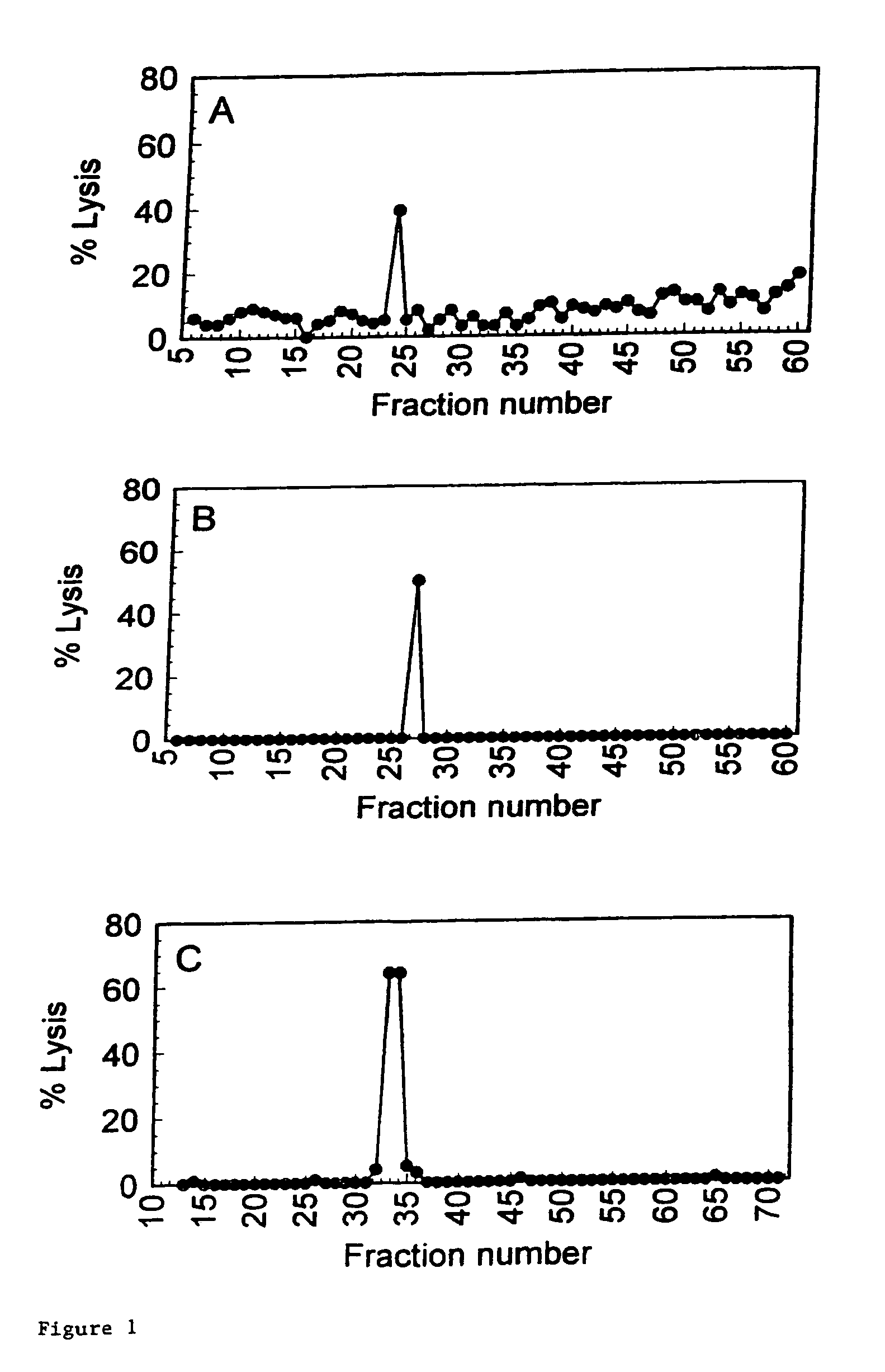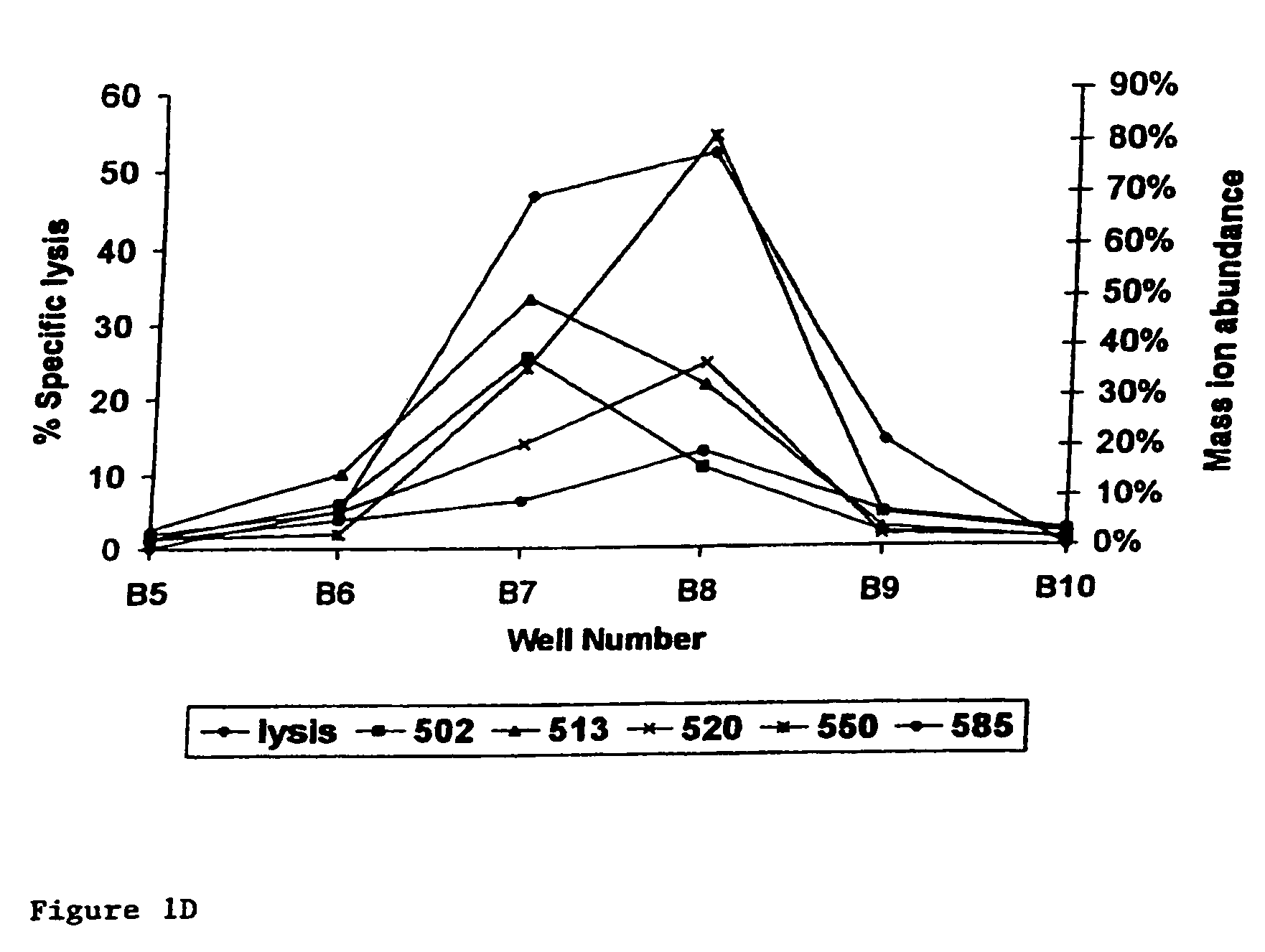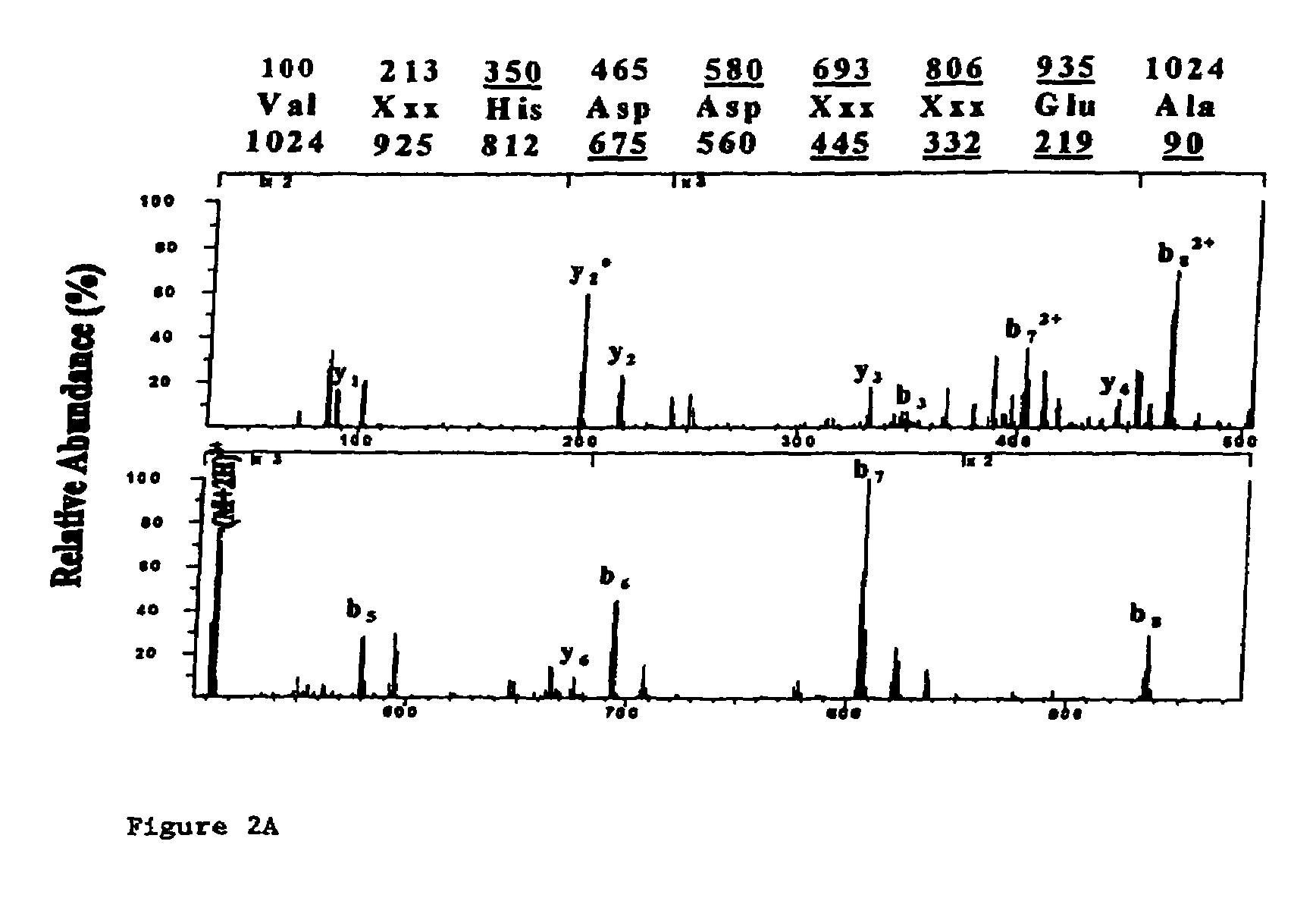[0016]A preferred embodiment of the present invention is the peptide with the sequence VLHDDLLEA (SEQ ID NO: 2) which induces
lysis of the
cell presenting it at a very low concentration of peptide present. This does not imply that peptides inducing
lysis at higher concentrations are not suitable. This will for a large part depend on the application and on other properties of the peptides, which were not all testable within the scope of the present invention. The peptides and other molecules according to the invention find their utility in that they may be used to induce tolerance of the donor
immune system in HA-1 negative donors, so that residual
peripheral blood lymphocytes in the eventually transplanted organ or the bone marrow, as it may be do not respond to host HA-1 material in a HA-1 positive recipient. In this way GvHD will be prevented or mitigated. On the other hand tolerance can be induced in HA-1 negative recipients in basically the same way, so that upon
receipt of an organ or bone marrow from an HA-1 positive donor no rejection on the basis of the HA-1 material occurs. For
tolerance induction very small doses can be given repeatedly, for instance intravenously, but other routes of administration may very well be suitable too. Another possibility is the repeated
oral administration of
high doses of the peptides.
[0019]A HA-1 negative donor for
bone marrow transplantation can be vaccinated with
a peptide according to the invention, a HA-1 peptide. Upon transplantation to a HA-1 positive recipient, the donor's
immune system can eliminate any residual or recurrent HA-1 peptide presenting cells in the recipient which are, of course, leukemic. This is another example of tailor-made
adoptive immunotherapy provided by the invention. A transplanted HA-1 positive recipient, transplanted with HA-1 negative (or for that matter HA-1 positive) bone marrow and suffering from
recurrent disease (relapse), i.e. HA-1 positive leukemic cells, can be treated with (again) an agent (as above) which specifically recognizes
a peptide according to the invention (a HA-1 peptide) as presented on hematopoietic cells, which agent induces
elimination of the cells presenting the peptide.
[0024]Furthermore, the identification of the HA-1 antigen allows the production of synthetic HA-1 peptides and peptides functionally and / or immunologically related thereto. Such peptides (which can include left or right turning residues) are designed and / or generated by various methods known in the art such as
peptide synthesis and replacement mapping, followed by functional binding studies. Altered peptide ligands (APL) for the HLA-A2.1 restricted HA-1
epitope enable modification of the HA-1 directed
T cell responses and thus modulate and / or mitigate the GvHD associated
T cell response. In general, T cells are activated by the interaction of the
T cell receptor (TCR) with the
antigenic peptide in the context of a MHC molecule and can react with a number of different
effector functions. APL can interact with the TCR and change the
effector functions of the T
cell qualitatively and / or quantitatively. APL, used
in vitro as well as
ex vivo can act as
antagonist or
agonist for the TCR and can anergize the T cells specific for the
wild type peptide. The HA-1 peptide is used to induce tolerance in the living bone marrow or organ (
kidney, liver, gut,
skin, etc.) of HA-1 negative donors for HA-1 positive patients. In
bone marrow transplantation, the peptide (given alone or in combination with others) is used to induce tolerance in the living bone marrow donor. The peptide(s) may be given orally, intravenously, intraoccularly, intranasally or otherwise. In all forms of organ, tissue and bone marrow transplantation, the HA-1 peptide is used to induce tolerance in HA-1 negative recipients.
[0026]An important
advantage of using mHag-specific CTLs in adoptive
immuno therapy of for example
leukemia lies in their restricted and specific target
cell damage. We take
advantage of three of the known characteristics of human mHag i.e. 1) MHC-restricted recognition by T cells; 2) variable
phenotype frequencies, i.e. —mHag polymorphism; and 3) restricted
tissue distribution, allowing specific and distinct targeting of mHag HA-1 related therapy. Restrictive HA-1
tissue expression significantly increases the success of adoptive
immuno therapy towards various types of
cancer, such as
small cell lung carcinoma cells which express also the HA-1 antigen. Moreover, since mHag are clearly expressed on circulating leukemic cells and clonogenic leukemic precursor cells of both myeloid and lymphoid origin, both types of leukemias can be targeted. mHag peptide CTLs can be generated
ex vivo from mHag-negative BM donors for niHag-positive patients.
Peptide-specific CTL clones from an HLA-A1-positive mHag-negative healthy
blood donor are generated by pulsing autologous APCs with mHag HA-1 related synthetic peptide. Proliferating clones are expanded and tested for specific cytotoxic activity. Upon transfusion (either pre-BMT as part of the conditioning
regimen or post-BMT as
adjuvant therapy), the mHag peptide-specific CTLs will eliminate the mHag-positive patient's leukemic cells and, if of the patient's origin, also the patient's hematopoietic cells but will spare the patient's non-hematopoietic cells. If necessary, subsequent miHag-negative donor BMT will restore the patient's hematopoictic
system. A universal approach is to generate “prefab” mHag peptide-specific CTLs by using mHag-negative healthy blood donors with frequent HLA-homozygous haplotypes. Patients who are mHag-positive (and their BM donors mHag-negative) and who match the HLA
typing of the CTL donor can be treated with these “ready to be used” allo-peptide specific CTLS. Transduction of these CTLs with a
suicide gene allows
elimination of the CTLs in case adverse effects occur. The cytotoxic T-cells may also be immortalized. For the sake of illustration a number of methods and applications is also given below in the experimental part.
 Login to View More
Login to View More 


